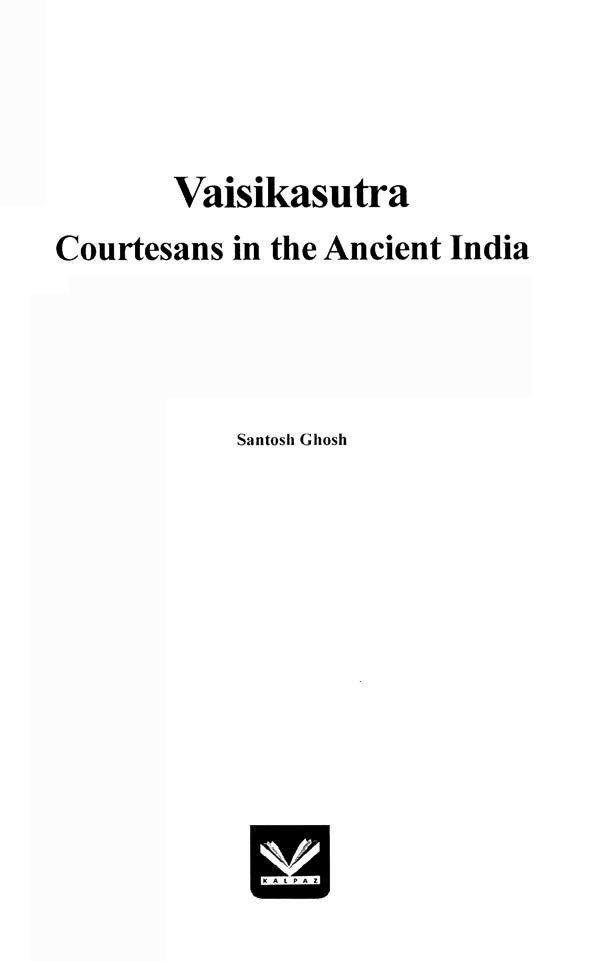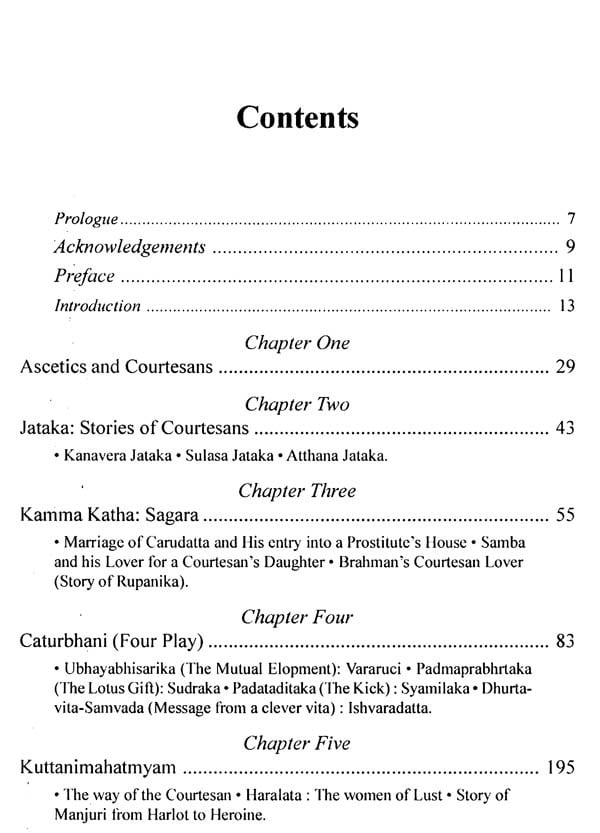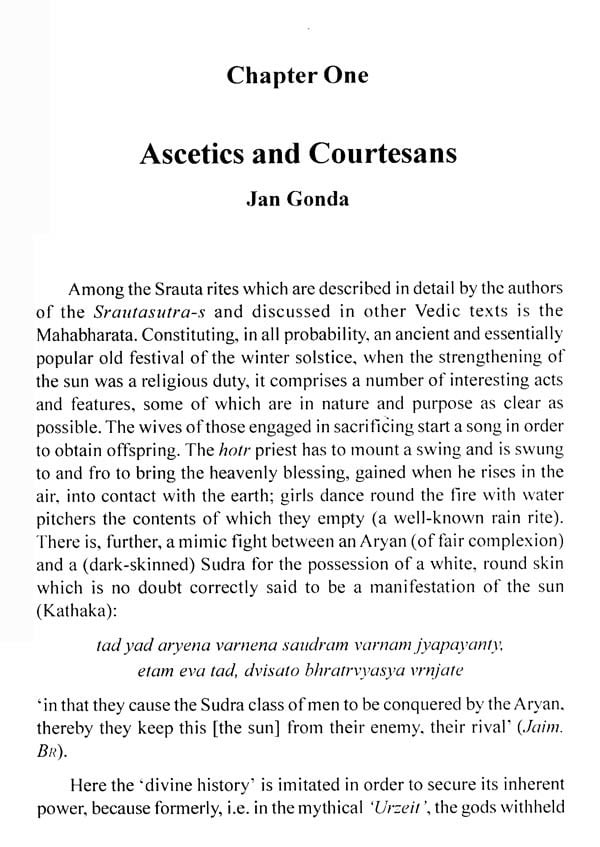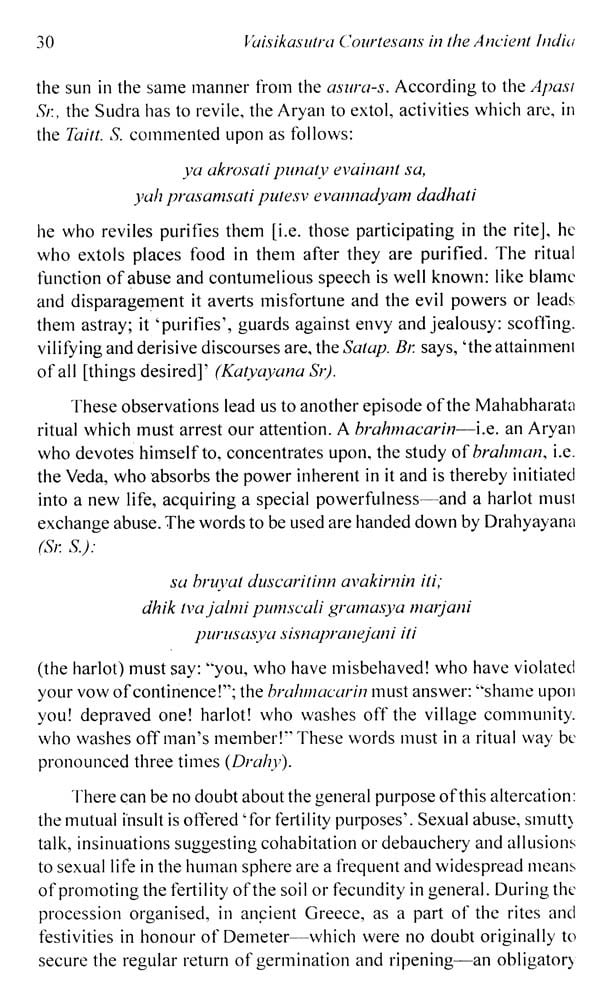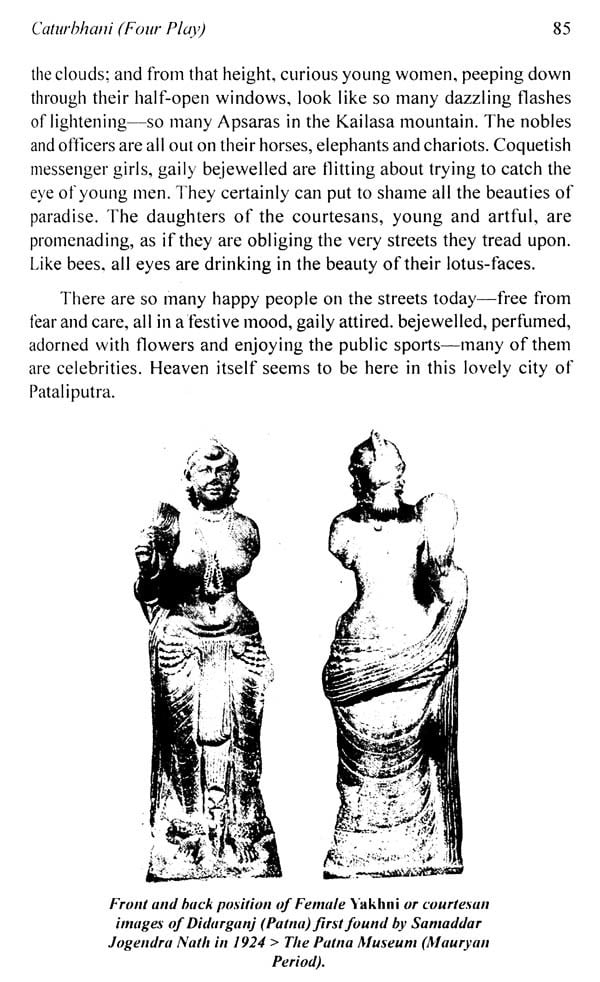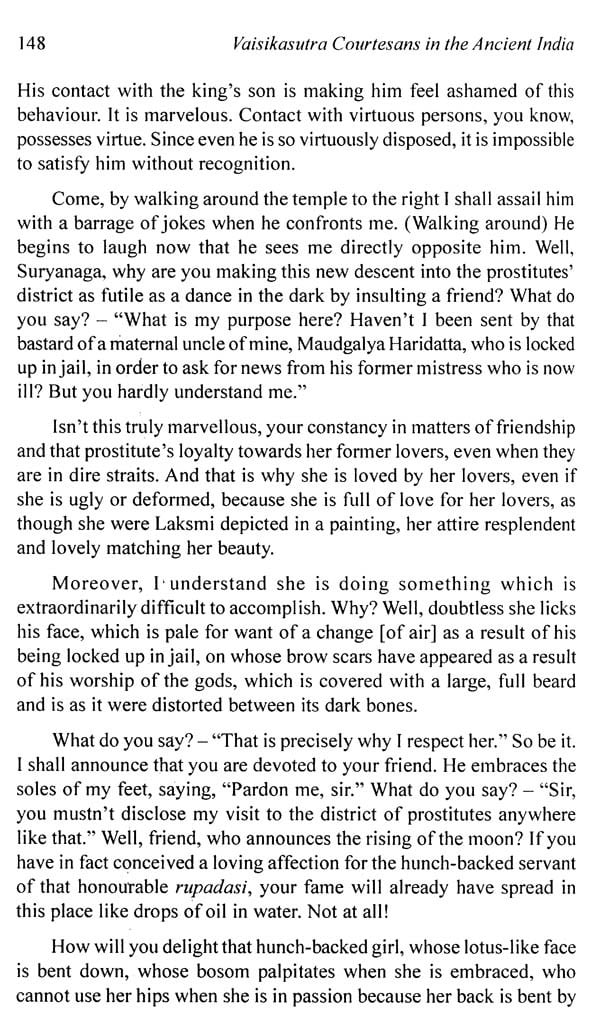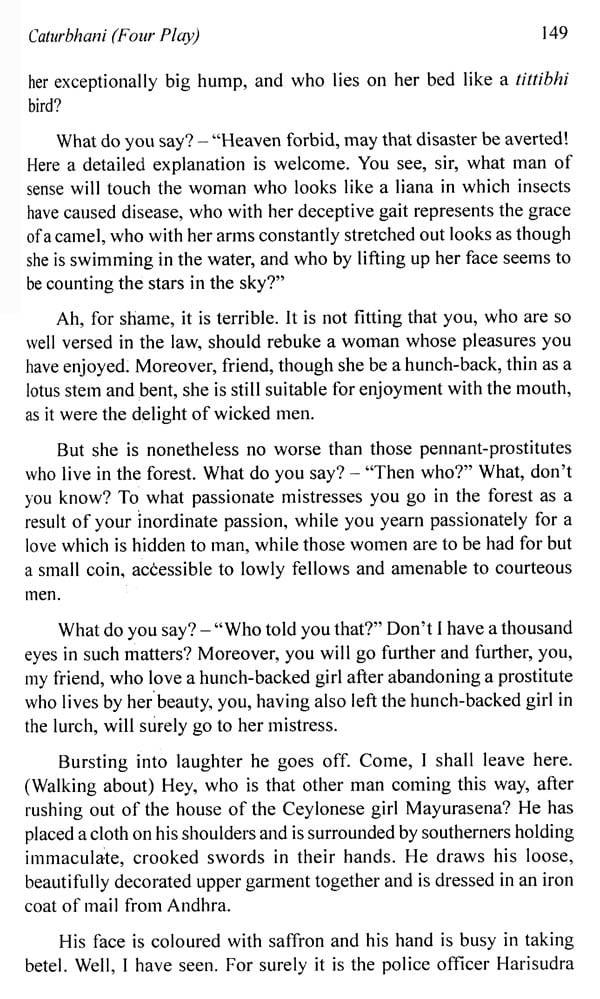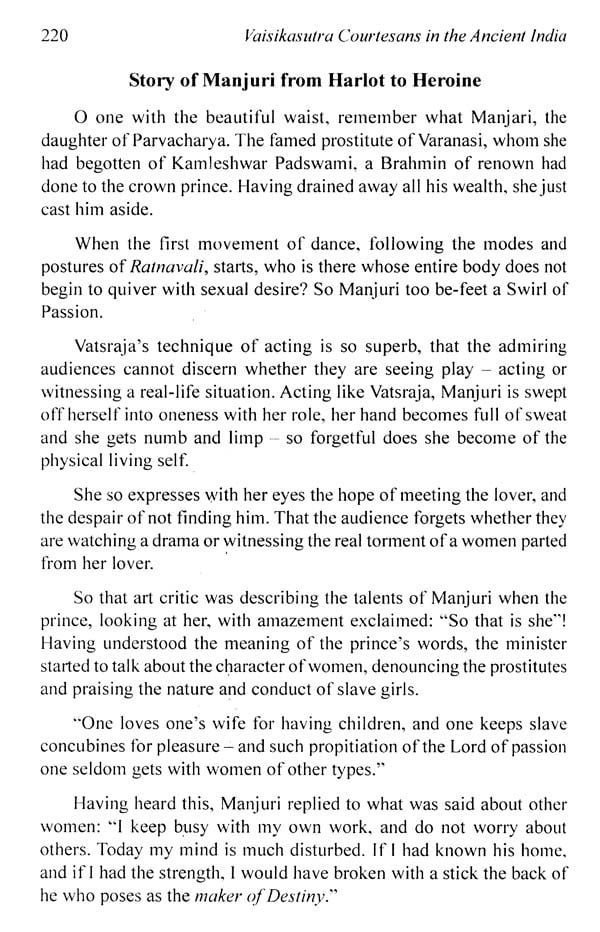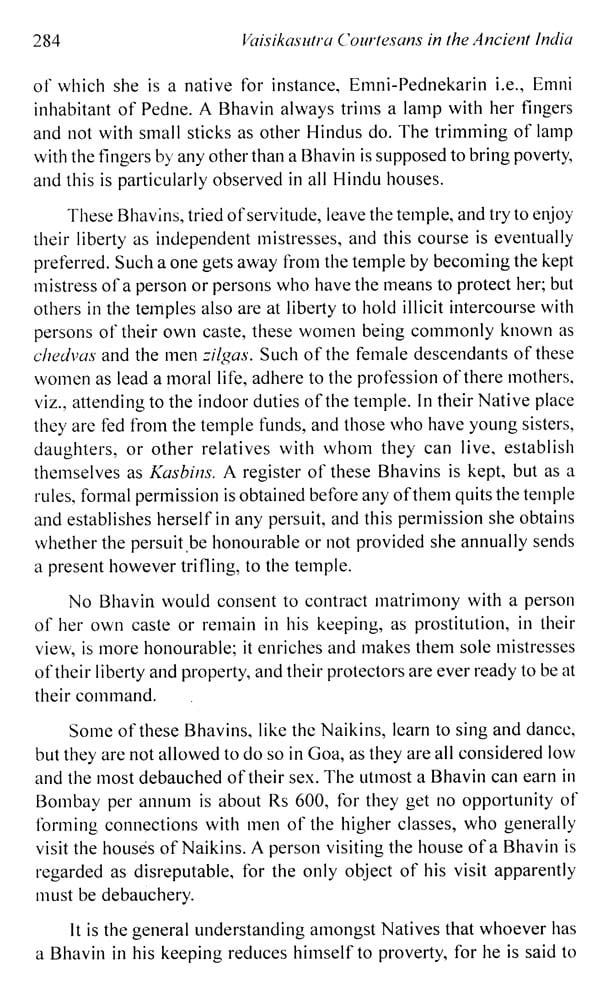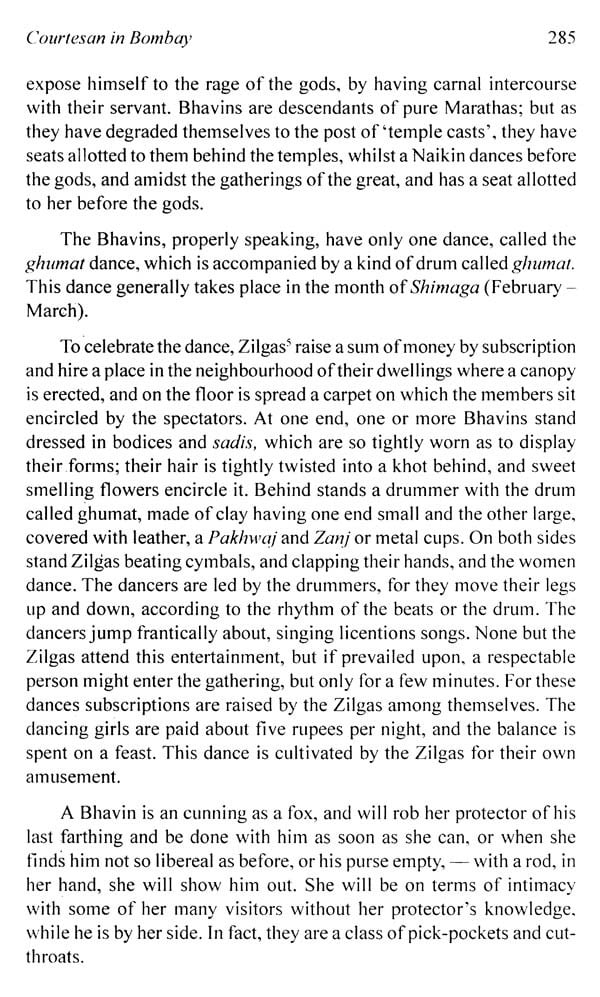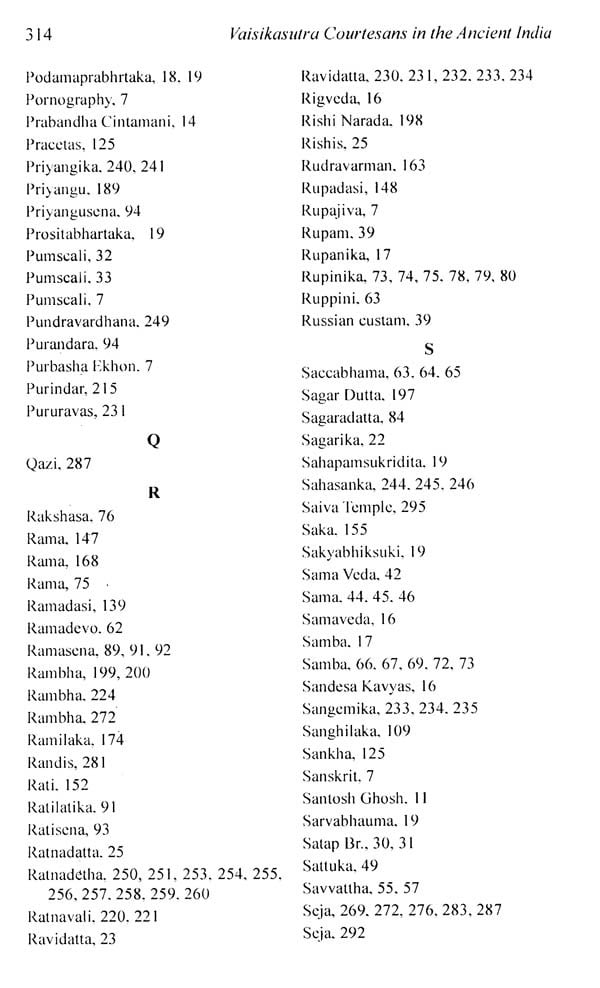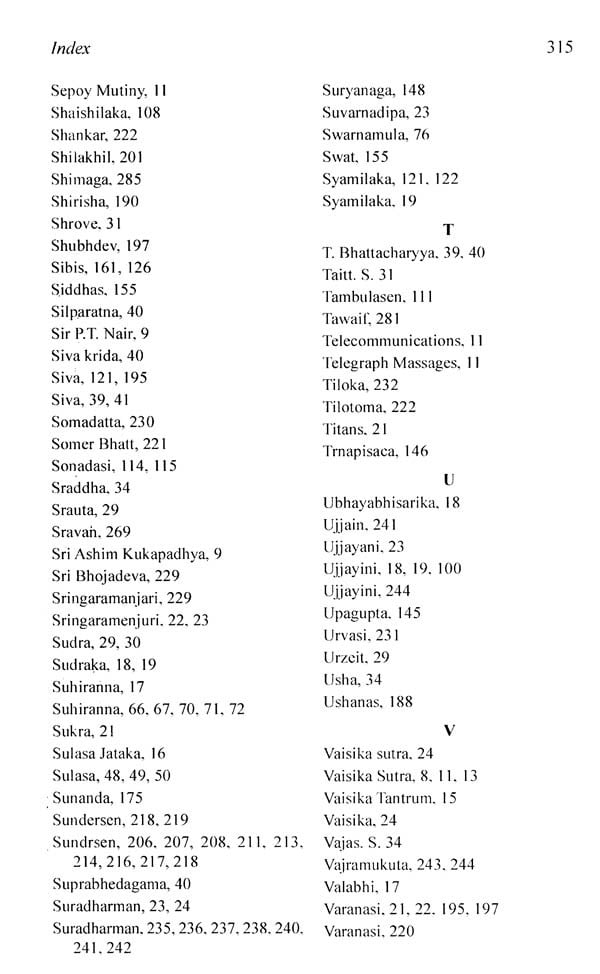About the Book The Vaisika sutra on courtesans in ancient India, present something delightfully natural and charming in the Hothouse of Sanskrit belles-letters. Herein each story attempts to depict the life and style of courtesans as whole. This complex emotion has inspired the stories in this form of unique book, where readers will find reflections of their own feeling thoughts and attitudes not only courtesan, but also their male partner, their character, qualities and reputation inscribe. As such the importance of these stories from the standpoint of Hindu social history in several of India is immense. They are also very important documents from the literary aspect. In addition to supplying evidence of the decadence of Hindu society. These poignant, intriguing, beautiful, comical and gesture of charming courtesans stories telling by greatest ancient Buddha-Jaina commentator, sanskrit poet, dramatist, writers of all time, will definitely leave radars mind with memorable, lingering touch of romance. This book is classified into seventh chapters. The very first chapter: Ascetics and Courtesans by Jan Gonda included 'The Canter of Samaveda and Courtesan'. Second Chapter: Jataka: Stories of Courtesans. Third Chapter: Kamma Katha Sagara. While Fourth Chapter Presents: Caturbhani (Four Play) included Ubhayabhisarika (The Mutual Elopment) of Vararuci. Padmaprabhrtaka (The Lotus Gift) of Sudraka. Padatatadiaka (The Kick) of Syami laka. Dhurta-Vita-Samvada (message from a claver vita) of Ishvaradatta. Fifth Chapter: Kuttanimahatmyam of Damodaragupta. Sixth Chapter: Srinagaramanjuri of Raja Bhoja. And the last Chapter: Courtesan in Bombay of K. Ragunathji.
About the Author Santosh Ghosh (Ganesh Kanti) engaged socio- culture and literary work as writer, an amateur Actor, dramatist and Music lover. Birth 1943 place Patna. He is married with a daughter and lives in South Kolkata (W.B.). He retired DOT/BSNL employee. As an author he has written several books in Bangla. His 'History of Telecommunication in 20th Century' (Kolkata 2001). 'The Sepoy Mutiny From Telegraph Messages' (Kolkata 2008) broke new grounds on that remarkable subject in English. His next work 'Music in the Ancient World' (Delhi 2012) and Whoredoms in Ancient Mesopotamia (International Literary Mag. Norway & India: 2015) is a testimony is his abiding interest that art.
Santosh Ghosh has tribute of respected as a researcher, and author from National Library, Kolkata (Govt. of India, Ministry of Culture) on the occasion of National Book Week (14-20 November, 2013).
Preface In my latest book Music in the Ancient World (Delhi: 2012) I have briefly described with the fact that through the ancient history and literature the art of Music begun in singing and dancing of Magical Women with regard to a professional character, showing exceptional female beauty and test and called them a harlot, ganika, vesya, rupajiva, pumscali, dasi and courtesan. The term is generally applied to the act of practiced by women referred to as "the oldest profession." This result motivated me and inspired to searching by and large in processes and through the years together for a remarkable composition.
In the treatment of such subject my first contribution: Wholesome in Ancient Mesopotamia publish in issue of Calcutta Book Fair 2015 of PURBASHA EKHON (Bilingual Bangla, English), International Literary Magazine launched from India and Norway.
Our ancient classic authors created how cans any literary craftsman who would hold up his contemporary as mirror, suppose to a courtesan life, their customs and practice of the art music performed for their interest of professions. They also created their own female body for sale of sexual love (all are doubtful pleasure!) for a male partner.
There are quite number (I have a record hundred of books) of books on erotic, and relation with the courtesans and few are also regarded as Pornography while this volume is at all not a tome, neither it's a bedside pillow book. The compiler selected twenty nos. of stories and each story told by our prominent (Sanskrit and Parakrit) ancient writers. So it’s expected this book is for the general readership. Also the book is intended both the Indian and foreign readers. It may even interest a special approach throughout the ancient from the known to unknown.
Introduction This book carries on the theme of Vaisika of courtesans in the Ancient India, which are based on directly study of the science of erotics. In Ch. XXII (Natya Sutra) devoted to Vaisika of nayaka (actor) Bharat speaks: "A Vaisika is so called because he excels (Visesaya) in all arts or become his dealings are in connection with a courtesan (Vesya).
As devoted to Vaisika Courtesan (actress), their nature of love Bharat says, of three class of the Vaisiki type, the courtesan, the madanatura (love sick) or one craving for company and showing it openly disporting herself, the anurakta (devoted) or the courtesan who is attached to a particular love and the virakta estranged or the courtesan who is averse.
The Kama sutra of Vatsyayana acknowledges his debt to numerous of earlier writers on the subject and gives an account of the origin of the science. He tells us that amongst the other authorities, Dattaka wrote on prostitutes; at the request of a prostitute of Pataliputra, another writer Ganika-putra on mistresses. In six chapter relating respectively to virgin, brides, wives, mistress, prostitutes, technique of sexual union and secret instruction.
The way of Dattaka is mentioned in Kama sutra, it can be safely assumed that Dattaka preceded Vatsyanyana by a couple of centuries. Dattaka was an author, famous poet, the author of Vaisikasutra or Vaisikadhikaram.
**Contents and Sample Pages**
